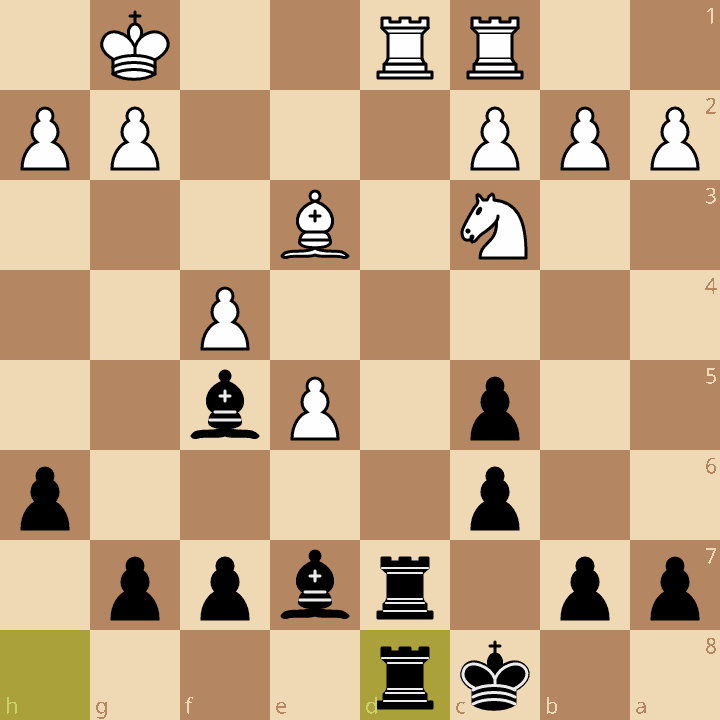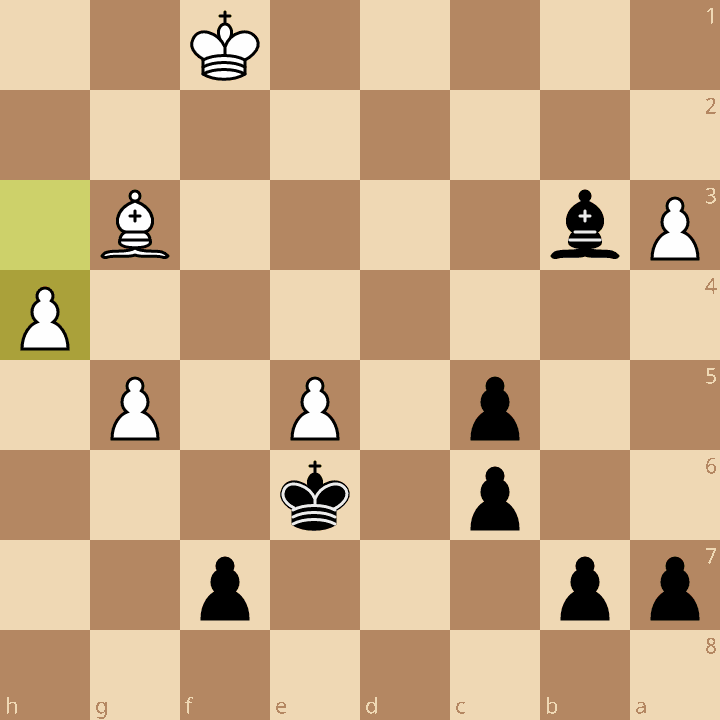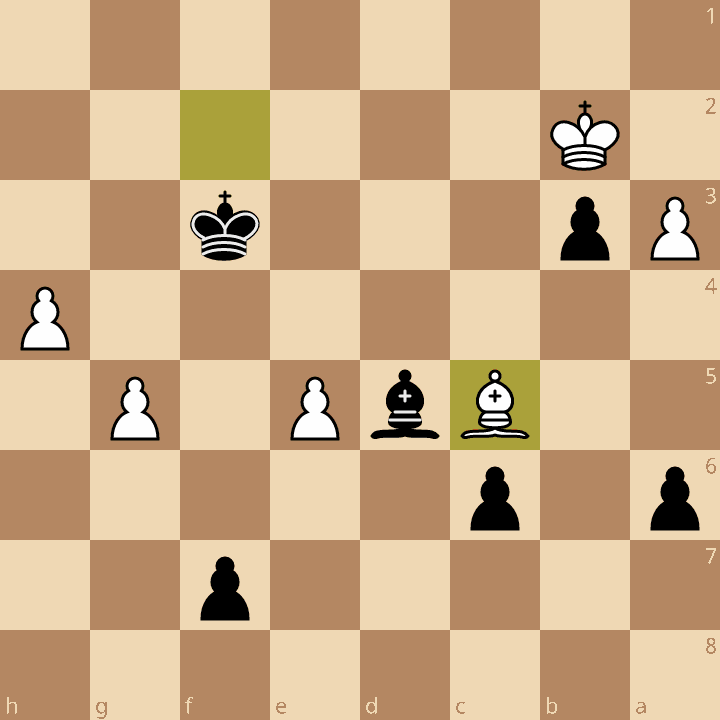Classical Game Recap: Sacramento Chess Club Weekend Swiss, Round 3
My endgame calculation needs A LOT of work.
It’s Round 3 of the Sacramento Chess Club Weekend Swiss Tournament. I’m on a bit of high in the morning due to a 2/2 start. I have good chances to win first place in the tournament — in fact, if I win this game I would be guaranteed to win clear.
Time Control: 90 minutes with a 30-second increment per move
White: Shan Lee (1451 USCF)
Black: Me (1667 USCF)
My opponent for round 3 is a young player who often frequents the club. He is strong, and I don’t think I’ve ever won a proper regular-rated OTB game against him. We always end up about even. His usual style is the Scotch Gambit. He’s tactically sharp but perhaps a bit overly cautious in simple positions, as we will see in this game.
1.e4 e5 2.Nf3 Nc6 3.d4 exd4 4.Bc4
This is the Scotch Gambit. Instead of recapturing the pawn with 4.Nxd4, White develops another piece and prepares to castle early. While theoretically Black is on solid ground and can easily equalize, White still has quite a bit of initiative that has to be defused before I can relax.
4…Nf6
Lichess calls this the “Dubois Reti Defense.” Nobody else does. Much like against the Scotch proper or the Italian Game, I think this forcing move is best. White has to defend the pawn or push it and extend his position further.
5.e5 Ne4!
This is the strict equalizing approach that Jan Gustaffson recommends in his legendary 1.e4 e5 Lifetime Repertoire on Chessable. The more classical approach is to counter with 5…d5, which is equally strong, but leads to murkier positions.
6.O-O Be7 7.Bd5 Nc5 8.Bxc6?!
I think this move is rather inaccurate. White will win back the pawn on d4, but the cost of the bishop pair is a bit much. 8.Re1 or 8.Nxd4 both score well in master practice.
8…dxc6 9.Qxd4?
9.Nxd4 would have lead to better chances for White.
9…Qxd4 10.Nxd4
During the game I felt that Black must be better in this endgame, but I wasn’t sure by how much. I spent quite some time deciding what to do here.
10…Ne6
Mostly, I wanted to swap off the knights and activate my bishop. Interestingly Stockfish recommends the move Na6 instead.
11.Be3 Nxd4 12.Bxd4 c5!?
This grabs space but also could prepare for the bishop to enter the long diagonal.
13.Be3 Bf5!
The c2 pawn now becomes an issue. I also considered 13…b6 but attacking the pawn seemed better.
14.Nc3 c6?!
I must have been seeing ghosts. 14…O-O-O right away was much stronger. 14…Bxc2 would be met with 15.Nd5 and I did not like the idea of playing 15…Bd8 to protect against a fork on c2. 14…b6 was also interesting (it doesn’t prevent Nd5 however)
15.Rac1 O-O-O 16.Ne2 Rd5?!
Also not a very strong move. I was trying to win the e5 pawn. A stronger idea would have been 16…h5. However I was nervous that this pawn would become weak. I shoudl have played this anyway. For instance, if 17.Ng3 Bg6 with continued pressure on c2, and threat of h4 incoming.
17.f4 h6
This prepares g5, but that isn’t a good move. Here the engine suggests g6, which doesn’t make a lot of sense to me at first. Maybe the idea is to increase control of f5 after 18.Ng3 Be6 19.f5 gxf6 20.Nxf5 Bf8 but it looks like White is getting a lot of activity.
18.Nc3 Rd7 19.Rfd1 Rhd8
I want to keep the d-file.
20.Rxd7 Rxd7 21.h3 g5?
A serious error, and I will lose a pawn soon. Instead, 21…h5, preventing White’s next, was called for.
22.g4! gxf4 23.Bxf4 Bg6 24.Bxh6
Now White’s got a great position. The h-pawn is passed and connected. I am in trouble, but I have the bishop pair — if I can use that to do anything good.
24…Bh4!
I have to blockade that passed pawn.
25.Bf4 Rd4 26.Ne2!?
My instinct was telling me that this position was a bit loose for White, but I wasn’t able to find a continuation to prove it.
26…Rc4 27.b3
I had intended to provoke 27.c3? Bd3!
27…Rxc2 28.Rxc2 Bxc2 29.g5??
This strange move is deceptively bad for White. Black now has some winning chances. 29.Ng3, preparing Nf5 to kick out the bishop from h4, would keep the endgame in balance. Now Black’s king can get active via the f5 square that the g5-pawn no longer defends. This threat busies White’s pieces and makes it difficult to make further progress in the position.
29…Kd7!
The king will move to the kingside, and the queenside pawns will become a problem for White.
30.Nc3 Be1!? 31.Ne2 Ke6 32.Ng3 Bb1
The bishops on White’s back rank kind of slice the position up nicely.
33.a3 Bc2 34.Kf1 Bxg3!?
I was reluctant to make this trade, but it seemed right. The opposite color bishop endgame is often drawn, but in this case Black’s massive majority on the queenside and proximity of the king to White’s passed pawns mean that this endgame could play itself. Unfortunately, I was the person who had to move the pieces for Black.
35.Bxg3 Bxb3 36.h4
36…Kf5?!
36…Bd1, preventing White’s next, was best.
37.Ke2
This is where I felt my advantage began to really start slipping. I don’t think I played cleanly at all from here on out.
37…a6?!
37…Be6 — The Bishop should cover the kingside very soon. 38.Kd2 b6 and Black would still have a pretty comfortable position.
38.Kd2 b5 39.Kc3 Bd5?!
I was trying to set up a defensive barrier. In general, I think I was too defensive during this phase of the game. After this move my advantage completely disappears.
40.Kb2??
A gift. White should play actively with 40.Bf2! which would force the forward c-pawn to a light square and allow the king entrance to the 6th rank via d4.
40…b4??
Rejected. 40…Bf3! would win, as it covers the kingside nicely and allows the queenside pawns to advance without worry. For instance. 41.Bf2 (Stockfish’s suggestion) Kxe5 42.Bxc5 Kd5 and c6-c5 is coming sooner or later with devastating potential. And if 41.Kc3 Ke4 42.e6 fxe6 43.g6 Bh5 44.g7 Bf7!
Note that the bishop covers both passed kingside pawns (if White plays h5, Bg8!).
Back to the game
41.Bf2
(obviously not 41.axb4 cxb4)
41…Kg4 42.Bxc5 b3 43.Bf2 Kf3 44.Bc5
Shan has played very strongly and has achieved a drawn position. Neither of us can make progress, but I tried to squeeze out any and all play out of this position. It eventually begins to get me into trouble.
44…Kf4 45.Bd4 Ke4 46.Bc3
46…Kd3??
Incredibly, I offer White a very winning chance.
47.Be1??
47.h5! wins straightaway, as I cannot stop the pawns. In fact, I will make this blunder multiple times, after which White can win via the same sequence of moves: 47…Be4 48.g6! fxg6 49.h6! g5 50.e6! Bg7 e7!
47…c5?? 48.Bc3?? c4?? 49.Be1?? Ke2 50.Bc3 Ke3 51.Be1 Kd3?? 52.Bc3??
That’s right — I blundered the draw four times in the last six moves, and my opponent reciprocated. I gave him multiple chances, but I think he fell victim to an analogous state of mind: While I was trying to win at all costs and not seeing that I should be happy with the draw, he was drawing at all costs, not seeing that he had the win. I exhaust all my options in an effort to get him to blunder, but in the end, we accept the draw after I try and try to get him to make a mistake and he calmly defends:
52…Ke4 53.Kc1 Kf5 54.Kb2 Ke4 55.Be1 Kd4 56.Bc3+ Ke4 57.Kc1 Kf5 58.Kb2 Bf3 59.Bd4 Ke4 60.Bc3 Kd5 61.Kc1 a5 62.Kb2 a4 63.Kc1 Ke4 64.Kb2 Kd3 65.Be1 Ke4 1/2-1/2
The gif:
Main takeaways:
I need to continue searching for weak pawns in the endgame — having a target-consciousness is necessary not just in the opening and middlegame but also in the endgame. If I were more proactive about looking for weaknesses to prod in this endgame I would have won it rather simply.
My short-term calculation needs a LOT of work. In particular I’m thinking of the boneheaded 21…g5? which lost a pawn and should have been discarded from my candidate moves list rather early.
My sense of danger in this endgame was essentially oblivious. I can’t believe I blundered away the draw so many times — I will not cut myself any slack on this, because if I want to become a national master I absolutely must stop making mistakes like this — it’s throwing away too many points.
I’m now 2.5/3 going into round 4, which I will cover on the next page. The good news: I’m guaranteed to share first place. The bad news: My opponent from round 1 is ready to avenge himself.
Thanks for reading and I’ll see you next week for the final game recap of this tournament when I get the White pieces against Anirudha Menon.



















